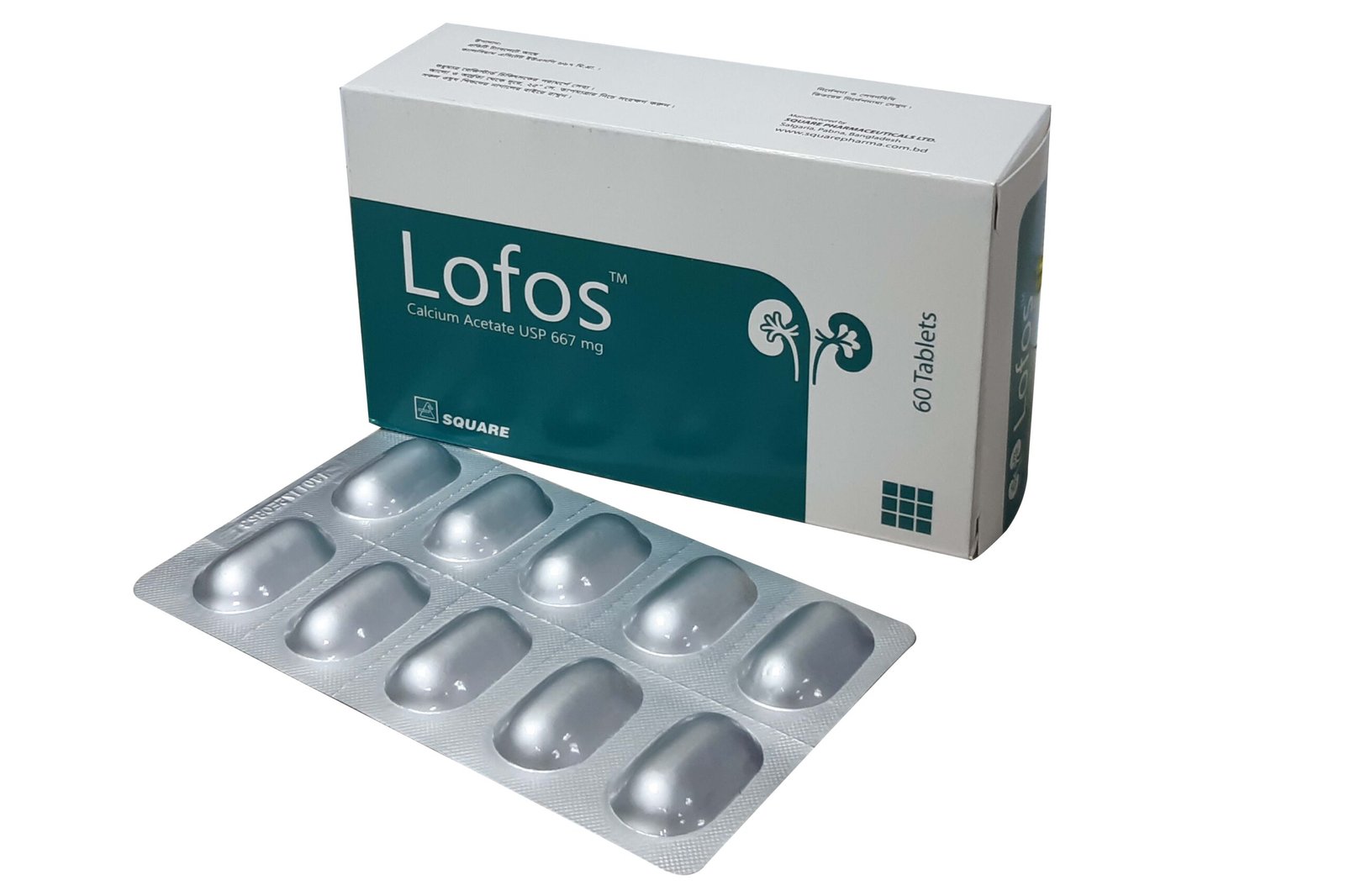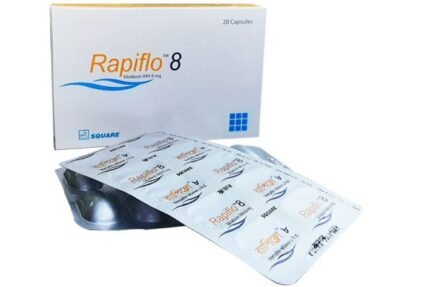Lofos 667
60.00৳ Strip
Proudly offering Lofos, a trusted solution for managing hyperphosphatemia in individuals with end-stage renal disease (ESRD). Our medication, Calcium Acetate, effectively binds with dietary phosphate, aiding in its excretion. With careful dosage adjustments, our goal is to maintain clinically acceptable serum phosphorus levels. Trust us for safe and effective solutions tailored to your needs
 Brand
Brand
|
Square Pharmaceuticals PLC |
|---|---|
 Generics
Generics
|
Calcium Acetate |
Indications
Lofos serves as a solution for managing hyperphosphatemia in individuals with end-stage renal disease (ESRD) while preventing the absorption of aluminum.
Pharmacology
Calcium Acetate, when ingested alongside meals, binds with dietary phosphate, forming insoluble Calcium Phosphate, which is then expelled through feces. The objective of phosphate binder therapy is to maintain serum phosphorus levels below 6.0 mg/dl, considered clinically acceptable. Thanks to its high solubility at neutral pH, Calcium Acetate readily binds with phosphate in the proximal small intestine. Clinical studies show that orally administered Calcium Acetate is absorbed systemically up to approximately 40% under fasting conditions and up to approximately 30% under non-fasting conditions, encompassing data from both healthy individuals and renal dialysis patients across various circumstances.
Dosage & Administration
For adult dialysis patients, the recommended initial dose of Calcium Acetate is 2 tablets with each meal, with gradual increases to achieve serum phosphate levels below 6 mg/dl, ensuring hypercalcemia does not arise. Typically, most patients require 3-4 tablets per meal.
Pediatric Use: The safety and efficacy of Calcium Acetate in pediatric populations have not been established.
Geriatric Use: Clinical studies reveal no significant differences in safety or effectiveness between geriatric and younger subjects. While there are no identified variations in responses between elderly and younger patients, some older individuals may exhibit greater sensitivity.
Interactions
Lofos usage may reduce the bioavailability of tetracycline.
Contraindications
Calcium Acetate is contraindicated in patients with hypercalcemia.
Side Effects
Occasional nausea may occur during Lofos therapy. Hypercalcemia is a potential side effect, presenting as constipation, anorexia, nausea, and vomiting in mild cases, while severe hypercalcemia may lead to confusion, delirium, stupor, or coma. Management involves adjusting the Lofos dose or discontinuing therapy. Pruritus, possibly indicating allergic reactions, has been reported in isolated cases.
Pregnancy & Lactation
Category C: Animal studies for Calcium Acetate’s teratogenic effects are lacking. Administration during pregnancy should only occur if the benefits outweigh potential risks.
Precautions & Warnings
Careful monitoring of serum calcium levels is crucial during Lofos therapy initiation and dosage adjustments, especially in patients on digitalis, as hypercalcemia may precipitate cardiac arrhythmias. Dosage adjustments should be cautious, with patients informed about compliance, dietary instructions, and symptoms of hypercalcemia.
Overdose Effects
Excessive Lofos intake can lead to severe hypercalcemia.
Storage Conditions
Store between 15°C to 30°C in a dry, light-protected place, out of children’s reach.













Reviews
There are no reviews yet.